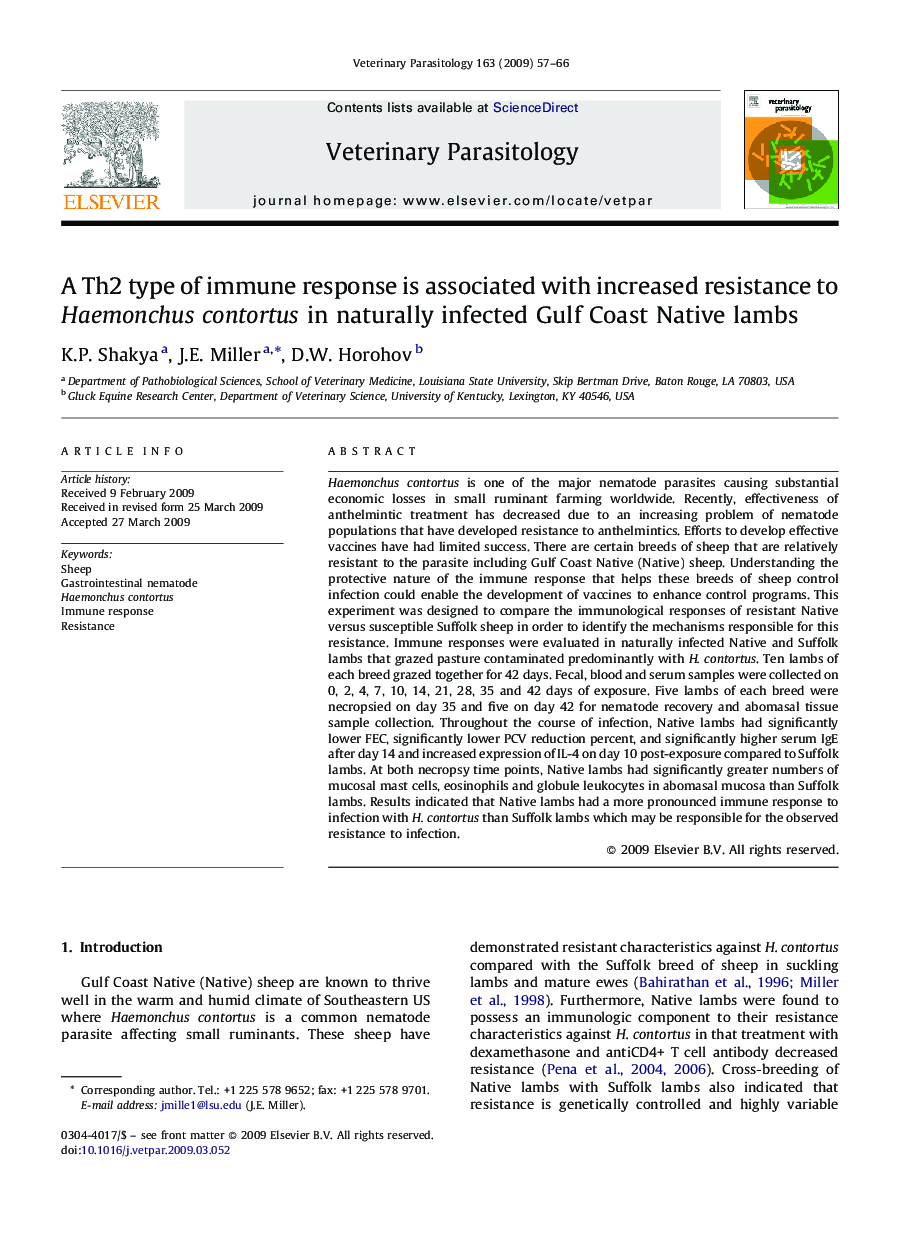| Article ID | Journal | Published Year | Pages | File Type |
|---|---|---|---|---|
| 5806192 | Veterinary Parasitology | 2009 | 10 Pages |
Haemonchus contortus is one of the major nematode parasites causing substantial economic losses in small ruminant farming worldwide. Recently, effectiveness of anthelmintic treatment has decreased due to an increasing problem of nematode populations that have developed resistance to anthelmintics. Efforts to develop effective vaccines have had limited success. There are certain breeds of sheep that are relatively resistant to the parasite including Gulf Coast Native (Native) sheep. Understanding the protective nature of the immune response that helps these breeds of sheep control infection could enable the development of vaccines to enhance control programs. This experiment was designed to compare the immunological responses of resistant Native versus susceptible Suffolk sheep in order to identify the mechanisms responsible for this resistance. Immune responses were evaluated in naturally infected Native and Suffolk lambs that grazed pasture contaminated predominantly with H. contortus. Ten lambs of each breed grazed together for 42 days. Fecal, blood and serum samples were collected on 0, 2, 4, 7, 10, 14, 21, 28, 35 and 42 days of exposure. Five lambs of each breed were necropsied on day 35 and five on day 42 for nematode recovery and abomasal tissue sample collection. Throughout the course of infection, Native lambs had significantly lower FEC, significantly lower PCV reduction percent, and significantly higher serum IgE after day 14 and increased expression of IL-4 on day 10 post-exposure compared to Suffolk lambs. At both necropsy time points, Native lambs had significantly greater numbers of mucosal mast cells, eosinophils and globule leukocytes in abomasal mucosa than Suffolk lambs. Results indicated that Native lambs had a more pronounced immune response to infection with H. contortus than Suffolk lambs which may be responsible for the observed resistance to infection.
